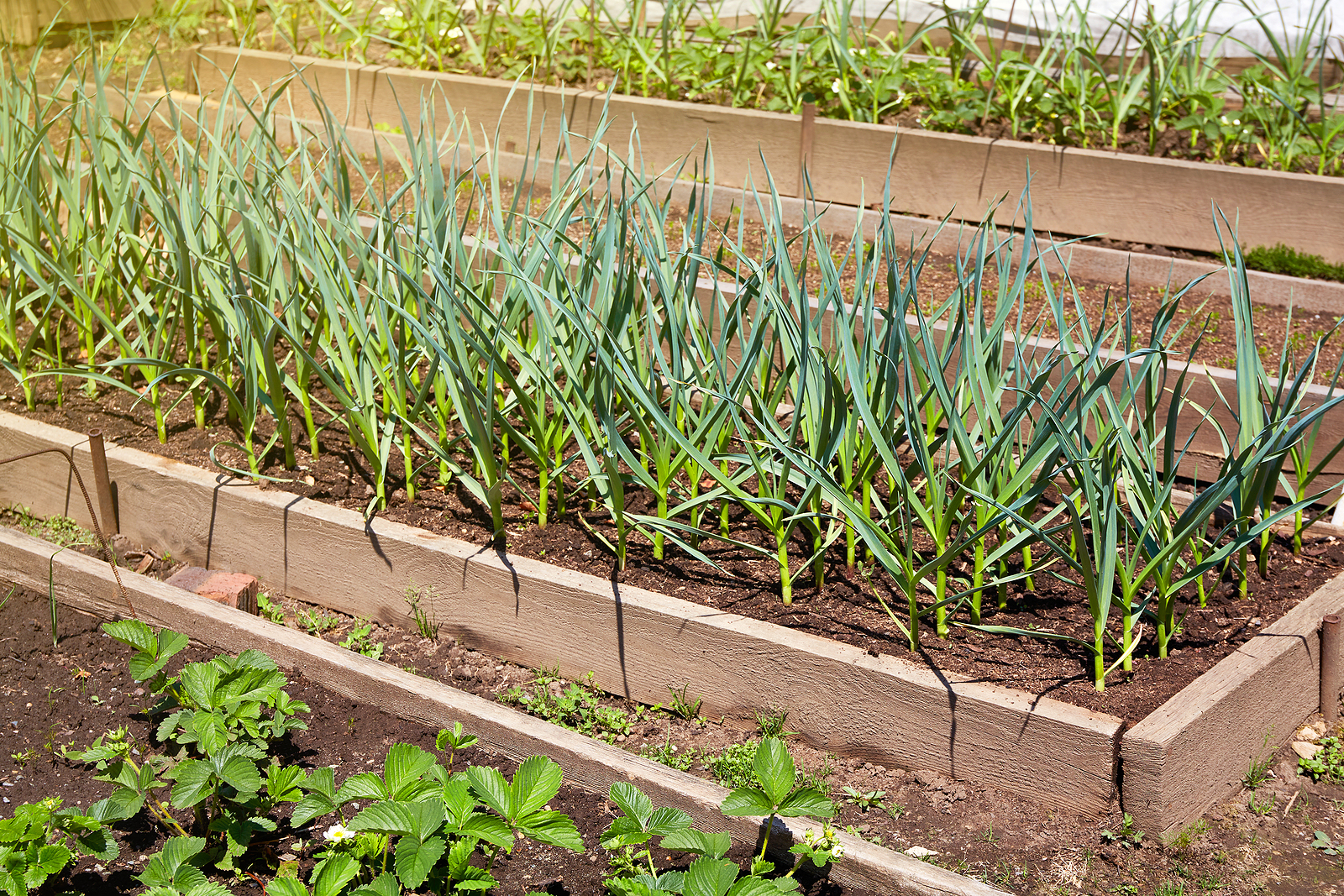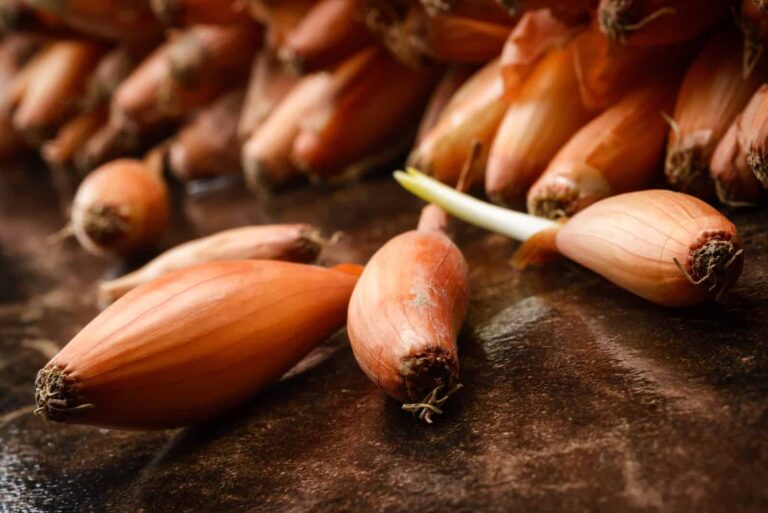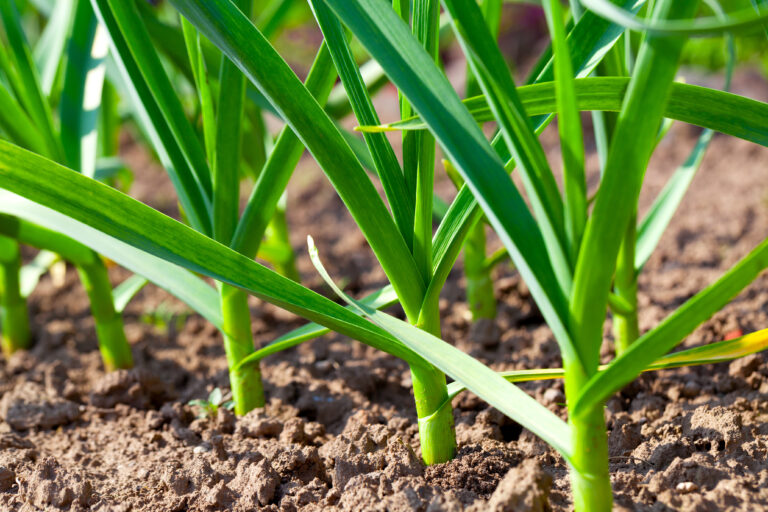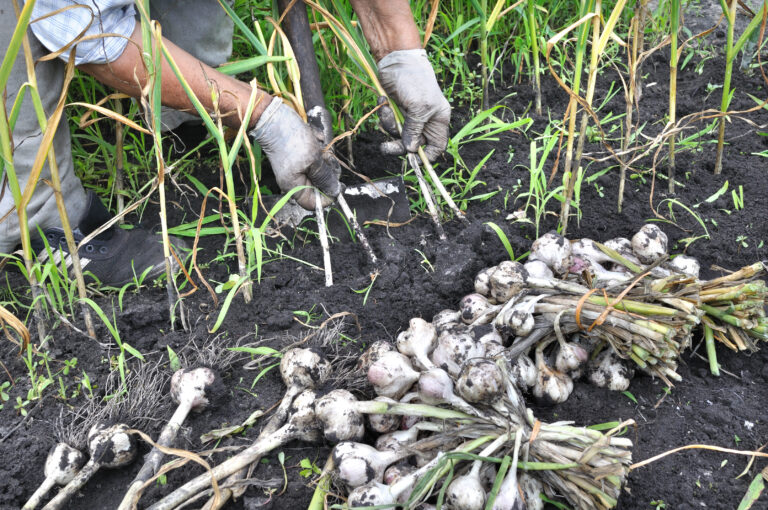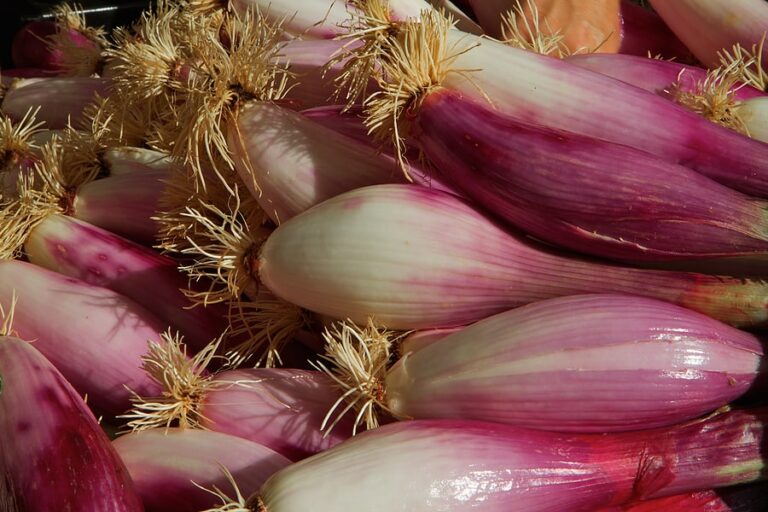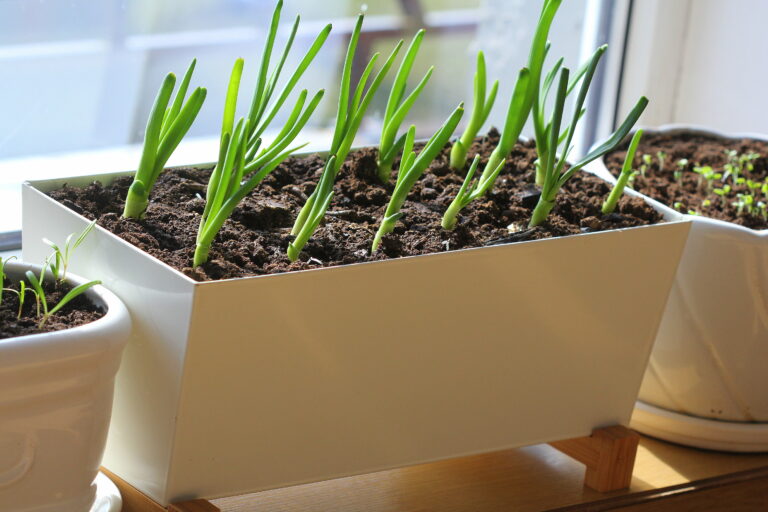Common Garlic Pests and Diseases and How to Control Them Naturally
Garlic is one of the easiest crops to grow, but like any garden plant, it’s not immune to pests and diseases. Over more than 30 years of growing garlic in California’s Central Valley and Sonoma Valley, I’ve dealt with my fair share of problems—and learned natural solutions that work without harsh chemicals.
Here’s a guide to the most common garlic pests and diseases, plus proven organic control methods.
Common Garlic Pests
1. Onion Thrips
- Signs: Silver streaks on leaves, curling, and reduced bulb size.
- Control: Spray with neem oil or insecticidal soap. Encourage beneficial insects like ladybugs.
2. Bulb Mites
- Signs: Stunted growth, soft bulbs, and decay during storage.
- Control: Rotate crops, avoid planting garlic in the same bed yearly, and use clean seed stock.
3. Leafminers
- Signs: Winding, white tunnels in leaves.
- Control: Remove and destroy affected leaves. Use row covers to block egg-laying flies.
4. Nematodes (Stem and Bulb Nematodes)
- Signs: Swollen, distorted bulbs; plants may yellow and wilt.
- Control: Solarize soil, rotate crops, and avoid replanting garlic in infected beds for 4+ years.
Common Garlic Diseases
1. White Rot
- Cause: Fungus Sclerotium cepivorum.
- Signs: Yellowing leaves, white fluffy mold at bulb base, premature plant death.
- Control: Rotate crops, remove infected plants, and improve drainage.
2. Downy Mildew
- Cause: Fungus-like organism Peronospora destructor.
- Signs: Pale patches on leaves, purplish mold underneath.
- Control: Improve airflow, water in mornings, and spray with copper fungicide if necessary.
3. Fusarium Basal Rot
- Cause: Fusarium oxysporum fungus.
- Signs: Yellowing, wilting leaves; basal plate rot on bulbs.
- Control: Plant in well-drained soil, rotate crops, and use resistant varieties when possible.
4. Rust
- Cause: Fungus Puccinia allii.
- Signs: Orange pustules on leaves, reduced bulb size.
- Control: Remove infected leaves, encourage air circulation, and spray with organic sulfur-based fungicide.
Preventing Garlic Pests and Diseases Naturally
- Practice crop rotation: Don’t grow garlic or onions in the same spot yearly.
- Start with clean seed stock: Use certified disease-free bulbs.
- Keep beds weed-free: Weeds harbor pests and reduce airflow.
- Water properly: Overwatering encourages fungal disease; water at soil level, not overhead.
- Encourage beneficial insects: Plant flowers nearby to attract natural predators.
🌱 My experience: Preventive care is the best control. I’ve seen far fewer issues in beds where I rotate garlic and improve airflow.
Bottom Line
Garlic pests and diseases can be frustrating, but most problems can be prevented or controlled with natural, organic methods. With a little attention, you’ll enjoy healthy, flavorful bulbs all season long.
Garlic Pests & Diseases Quick Reference Chart
| Problem | Signs of Damage | Likely Cause | Natural Control Methods |
|---|---|---|---|
| Onion Thrips | Silver streaks, curled leaves, small bulbs | Tiny sucking insects | Neem oil, insecticidal soap, attract ladybugs |
| Bulb Mites | Soft, stunted bulbs, rot in storage | Mites in soil or bulbs | Rotate crops, clean seed, avoid replanting beds |
| Leafminers | White, winding tunnels in leaves | Fly larvae inside leaf tissue | Remove affected leaves, use row covers |
| Nematodes | Swollen, distorted bulbs, wilting plants | Microscopic soil worms | Solarize soil, rotate 4+ years, resistant stock |
| White Rot | Yellow leaves, white mold at bulb base | Fungal infection | Remove plants, rotate crops, improve drainage |
| Downy Mildew | Pale spots, purple mold underside leaves | Fungus-like organism | Better airflow, water mornings, copper spray |
| Fusarium Rot | Yellow, wilted leaves, basal bulb rot | Soil-borne fungus | Well-drained soil, rotate, resistant varieties |
| Rust | Orange pustules on leaves | Fungal spores | Remove leaves, improve airflow, organic sulfur |
🌱 Tip from my garden: I walk my garlic beds weekly during spring and early summer—catching pests and disease early makes all the difference.
Garlic Preventive Care Calendar (Month-by-Month)
| Month / Stage | Preventive Task | Why It Matters |
|---|---|---|
| Before Planting | Rotate crops, choose clean seed stock | Prevents soil-borne diseases and nematode buildup |
| Fall (Planting) | Prepare well-drained beds, add compost | Healthy soil reduces fungal risk |
| Early Winter | Mulch with straw or leaves | Suppresses weeds and protects bulbs from cold |
| Late Winter | Check mulch, remove weeds early | Prevents pest hiding spots |
| Early Spring | Inspect leaves weekly for pests | Early thrip or leafminer damage is easier to manage |
| Mid Spring | Water at soil level only | Reduces fungal diseases like downy mildew |
| Late Spring | Thin weeds, improve airflow between rows | Reduces rust and mildew risk |
| Early Summer | Remove any yellowed or infected leaves | Stops spread of fungal spores |
| Harvest Time | Lift gently, avoid bruising bulbs | Reduces post-harvest rot |
| Curing | Dry bulbs in airy, shaded space | Prevents mold and storage diseases |
| Storage | Keep in cool, dry, ventilated area | Extends shelf life and prevents sprouting |
🌱 My gardener’s tip: Most garlic problems are avoided by rotation, airflow, and careful watering—these three practices save me the most trouble year after year.
Garlic Growing Hub
Start here: The Ultimate Garlic Growing Guide: From Seed to Harvest
🌱 Garlic Planting & Timing Clusters
- Garlic Plant Starting Tips: How to Get Going
- When to Plant Garlic: Fall vs. Spring Compared
- Garlic Planting Calendar by Zone (Month-by-Month Guide)
- Ideal Soil Temperature for Planting Garlic and Why It Matters
- Climate Guide: Growing Garlic in Warm vs. Cold Regions
🧄 Garlic Types & Varieties Clusters
- Softneck vs. Hardneck Garlic: Key Differences for Gardeners
- Best Softneck Garlic Varieties for Home Gardens
- Best Hardneck Garlic Varieties for Flavor and Storage
- Rocambole Garlic: What It Is and How to Grow It
- Elephant Garlic: Tips for Planting and Harvesting Giant Bulbs
🌿 Growing & Care Clusters
- Proper Garlic Spacing for Bigger Bulbs
- How to Water Garlic the Right Way
- Fertilizing Garlic: Feeding Tips Bigger, Healthier Bulbs
- Essential Garlic Care: From Planting to Harvest
- Best Companion Plants for Garlic (And What to Avoid)
- How to Grow Garlic in Containers: Step-by-Step Guide
🐛 Pests & Disease Clusters
🌾 Harvest & Storage Clusters
- How to Tell When Garlic Is Ready to Harvest
- How to Harvest and Store Garlic
- How to Cure Garlic for Long-Term Storage
- Best Ways to Store and Preserve Garlic at Home
🍳 Kitchen & Use Clusters
- Garlic Cooking and Severing Ideas for Your Harvest Table
- Fresh Garlic vs. Stored Garlic: Flavor and Cooking Differences
- Garlic Scapes: What They Are and How to Use Them
- Leeks vs. Green Onions vs. Garlic: What’s the Difference

